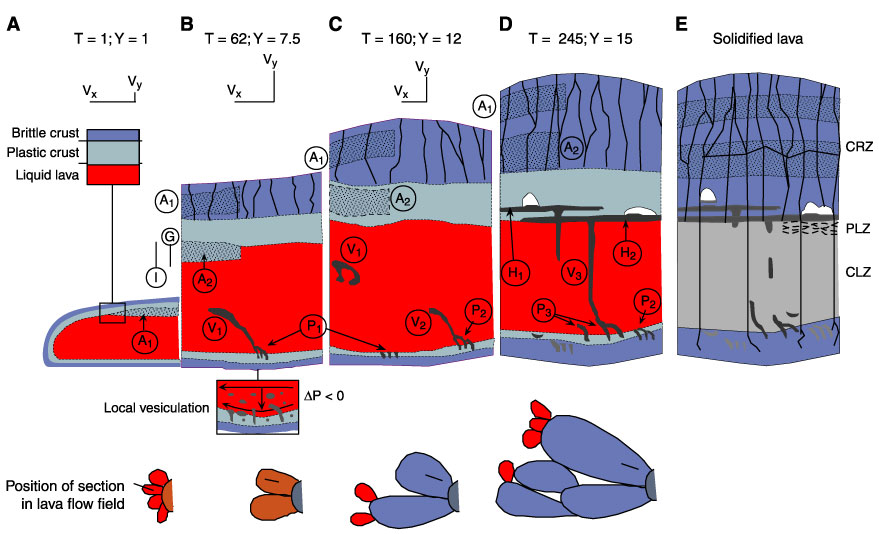
Figure F17. Idealized cross sections showing four growth stages of a pahoehoe sheet lobe at a fixed location: (A) Stage 1: T = 1 and Y = 1; (B) stage 2: T = 62 and Y = 7.5; (C) stage 3: T = 160 and Y = 12; (D) stage 4: T = 245 and Y = 15; and (E) internal flow structures after solidification. Units of time (T) and thickness (Y) are given in days and meters, respectively. Proportions of lateral and vertical expansion of flow lobe are indicated by Vx and Vy, respectively. Direction of inflation (I) and growth direction (G) of the upper lava crust are indicated by arrows. Main components are the liquid lava core (white) and the plastic (shaded) and brittle (black) portions of the crust. Plastic crust is above temperatures of brittle behavior but below the solidus temperature of the magma. Black lines = joints of the crustal zone (CRZ) and of the columnar zone (CLZ), dashed horizontal lines = joints of the platy zone (PLZ). Other structural features include vesicular zones (A [dotted]), pipe vesicles (P), vesicle cylinders (V), and continuous (cH) horizontal vesicle sheets. Megavesicles (white) are shown as dome-shaped features. The subscripted numbers indicate the sequence of formation of individual structures during lava emplacement. A schematic plan view of the lava flow field is given below each stage, and the location of the cross section is indicated by the bar. Dark gray areas = sheet lobes, stippled areas = lava breakouts from the front of an active lobe (from Thordarson and Self, 1998).



![]()